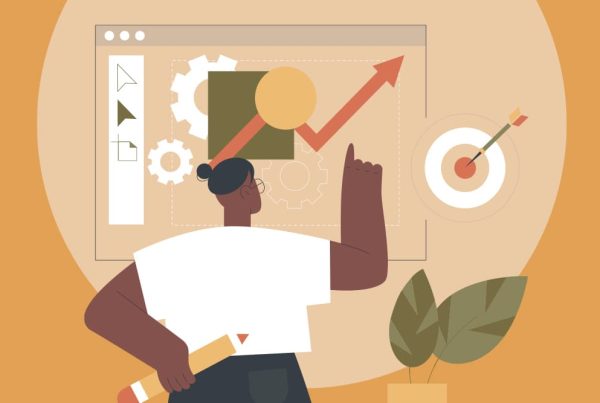Part 5 of ‘How to Build a Design Agency for Under $3K in 5 Years’
Growing a business is harder than starting one.
Most business owners understand this problem too well. Seeing stagnant sales numbers can be disheartening when you need to break even, turn a profit or scale up. Seeing the same pile of tasks in your inbox daily can be demotivating even to an enthusiast.
Before I talk about how to grow your business, it is important to understand that your business must be stable, and that you’re not in firefighting mode before trying to grow. Only when you’re able maintain a healthy cash flow, that you can afford to think bigger and level up.
If you’ve been following my series on how to build a design agency for under $3K, your agency should be surviving by now but not flourishing — yet. You may have a few retainer clients and projects which keep your business afloat and pay you a decent salary.
My design agency, Relab, reached a point a few years back when it was the same old grind every day. We hit a plateau and I, most of all, was dreaming of working on bigger and more exciting projects.
It took a while to scale up, but I can now break down the process into simple steps for you. It may sound simplistic, but you can apply this process to grow any business, even for your personal life.
So, what does it take to jump from dull to thrilling days, from just existing to feeling exhilarated?
I call it my 3-bucket system.
Step 13: Grow your business with the 3-bucket system
I love this quote by Buddha:
”The mind is everything. What you think, you become.
I’ve experienced this firsthand and I can tell you it is true. Once you embrace this philosophy, you are ready to grow.
Growing your business boils down to incremental improvements, starting from reframing your mindset. You don’t jump from nobody to somebody overnight, even those so-called overnight successes had years of struggle behind them.
My 3-bucket system runs in 5-year cycles because it breaks things down easier. I’ve found it to be the best balance for me. Any fewer than 5 years, and it is too short to see significant results. Any more and you tend to get complacent because of the lack of urgency.
Now Bucket
The “Now” bucket is your present state. This is your bread and butter, which is what is sustaining your lifestyle and paying the bills for your business. Typically, your bucket would have your present salary, current revenue, type and size of clients, team size, number of accolades and other relevant details of your business.
As a word of advice, you may want to include your current lifestyle too because I think it is a big priority. For example, you may be working 6 days a week now and you want to get to a point where you can cut down your days to 5 but earn a higher salary.
Short Term Bucket
This is what you want to have and where you want to be in 1–2 years’ time. Think hard about what is realistically achievable between 12 and 24 months and put it in your bucket.
Long Term Bucket
This is 3–5 years from now. What kind of lifestyle do you want to have? How will your business look? What types of project are you working on? What’s the quality of work your agency is delivering? What do customers or peers think of you?
I should emphasise that the keyword here is realistic. Don’t worry about not achieving your lifelong dream within 5 years. You can build another 5-year cycle to get there. It’s all about small achievable steps that make up the rungs of your success ladder. And hey, sometimes you may fall off the ladder, but you would have built a solid foundation to fall back on.
You will move your business from bucket to bucket until you achieve your long-term goals, until your long-term bucket becomes your present state, your now. Once there, you can build another 5-year cycle if you’re still not where you want to be. If you are, perfect!
How do I move from one bucket to another?
To move up or upgrade to the next state, you need to:
- First: Plot your path to the next bucket
- Second: Improve what is needed
- Third: Go bigger and make it your new standard
Sub-step 1: Plot your path to the next bucket
If your business is already doing $300K a year, then picture yourself doing $600K a year.
Now start acting like you are already a $600k business. Review everything: your budget, process, team capabilities, case studies, turnaround time, pricing, tools, and marketing. Study the competitors or other $600K company in your industry. What do they have that you don’t? What are they doing that you’re not?
What about your clients? If they’re forking out twice the fees for your agency, what would they expect from you in terms of work and service?
Sub-step 2: Improve what is needed
For you to grow bigger, you must improve your current state. As a design agency, your people and systems are your biggest assets, so don’t be afraid to pour money into them.
I hired highly skilled people who fit in our culture. I invested heavily in training and retraining.
We looked at better tools, systems and workflows that will remove bottlenecks and increase productivity.
All this because change needs to come from within first, and therefore it needs to happen inside your agency first. Of course, this comes after you have improved your weaknesses as a business owner.
Sub-step 3: Go bigger and make it your new standard
It’s time to go big. I’m not talking about shooting for the stars, but enough to get you to the next bucket or state, whether “Short Term” or “Long Term”
Study what helped you win projects and awards, receive raving reviews and deliver outstanding projects. Now, do it on a larger scale.
Promote yourself wider and bigger. Spend money on ads that worked for your agency. Pitch in front of bigger clients. Take bolder risks with your designs and projects. Set higher goals and work together to reach them.
It’s essentially the same processes that you’ve done before but with more intensity, bigger budget and workforce.
But always have the customers in mind. Let them see the value that they get from you. It should be less about you, more about how you’re helping them and the benefits they reap from you.
By following these three steps religiously, opportunities will present themselves to you, most likely from word of mouth. Eventually, your “Long Term” state becomes your “Now” state. The customers you dreamt about 5 years ago is now your bread and butter customers. Then, you can build the next 5-year cycle for even bigger dreams.
Before I wrap things up, I should warn that you will experience breakups from even your most loyal client. It can be devastating and even hurt you personally.
I’ve learnt that, sometimes, there’s nothing you could have done better. They just prefer to work with a bigger agency or there was a change in direction, management or budget. However, if there are things you could have done better, then try to get as much feedback as possible from your ex-client. The input is worth its weight in gold.
I’m now almost at the end of my 6-part series on how to build your design agency for under $3K. For the final part next month, I will talk about something different. I’m going to write about the intangible steps and qualities that go into building a business from scratch.
This, I believe, is the secret recipe to what separates a business that succeeds and one that fails. It’s what separates a person from pushing on or giving up. It’s also what determines your quality of life, whether you end up a prisoner in your own business or feel completely content with your life and work.
And, just in case you missed it…
Illustrations by: Irenne Tj
https://www.instagram.com/irennetj/
https://www.facebook.com/inspirationneverends/







